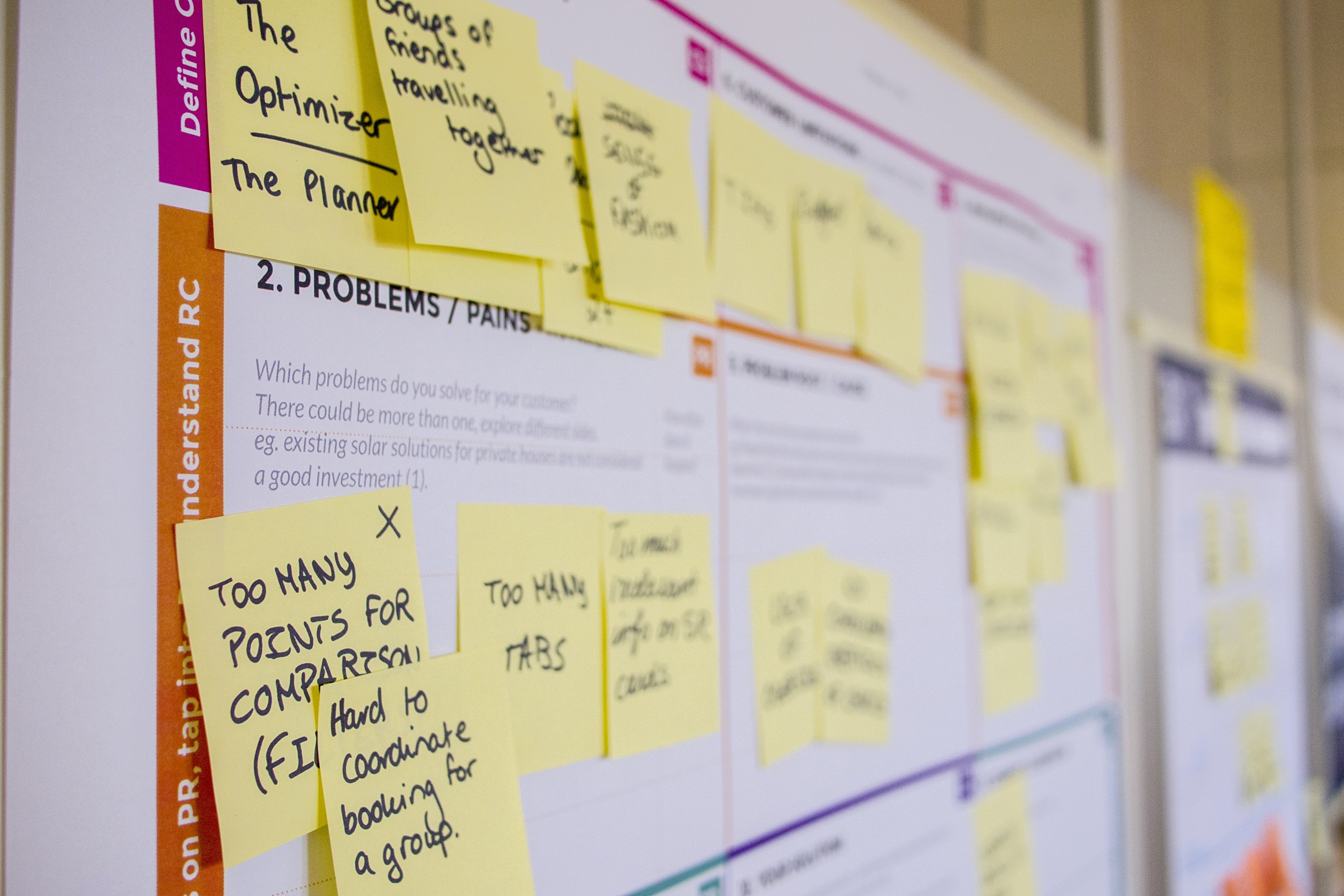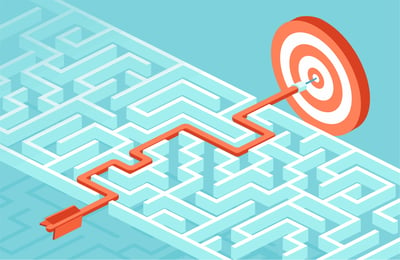July 22, 2023
 by Aditya Agrawal / July 22, 2023
by Aditya Agrawal / July 22, 2023

In project management, two prominent (and popular) methodologies have emerged as contrasting approaches: Agile vs. Waterfall.
On the one hand, Agile, a flexible and iterative approach, emphasizes adaptability, collaboration, and continuous improvement. It thrives in dynamic environments and allows teams to respond to changing requirements and deliver incremental results.
On the other end of the spectrum, Waterfall follows a sequential and linear process, where each phase must be completed before moving to the next. It excels in projects with well-defined requirements and predictable outcomes.
The primary difference?
While Agile promotes flexibility and customer collaboration, Waterfall emphasizes rigorous planning and documentation.
Understanding the nuances of these methodologies is essential for project success. In this blog, we will learn about the key differences between Agile and Waterfall to help you choose the most suitable approach for your project.
Agile project management is a collaborative and iterative approach emphasizing flexibility and adaptability while managing project scope and deliverables.
It is guided by agile principles that promote customer satisfaction, responsiveness to change, and continuous improvement.
Agile employs a variety of methodologies, such as Scrum, Kanban, and Lean, to name a few. These frameworks typically involve breaking down the project into smaller increments called sprints or iterations.
Each iteration focuses on the following:
This iterative, customer-centric approach enables teams to respond quickly to changing requirements and deliver high-quality results more efficiently.
|
Advantages of Agile project management |
Limitations of Agile project management |
| Enhanced flexibility: Allows for quick adaptation to changing priorities, fostering greater flexibility and responsiveness | Lack of predictability: Iterative nature can make it challenging to accurately predict project timelines and costs |
| Customer collaboration: Promotes regular customer involvement, ensuring their needs and expectations are met throughout the project | Documentation challenges: Places less emphasis on comprehensive documentation, making it difficult to maintain project records and knowledge transfer |
| Continuous improvement: Encourages a culture of continuous learning and improvement, enabling teams to refine their processes and deliver higher-quality outcomes over time | Team dependency: Relies on collaboration and self-organizing teams, which can become a limitation when individual team members are unavailable or lack the required expertise |
| Early value delivery: Focuses on delivering incremental value in each iteration, allowing stakeholders to realize benefits earlier in the project lifecycle | Complex resource management: Agile's iterative nature can make resource management more complex, particularly when multiple projects are running concurrently |
| Risk mitigation: Encourages regular feedback and early identification of risks, enabling proactive risk mitigation strategies throughout the project | Limited scope for large-scale projects: Is typically more effective for smaller to medium-sized projects and can be difficult to apply to large-scale, complex projects |
Waterfall project management is known for its structured and methodical approach, where each phase is typically completed before moving forward.
This linear progression allows for a clear understanding of the project scope and requirements but may lack flexibility in adapting to changes that may arise during the project.
The key phases of the Waterfall project management lifecycle typically include:
|
Advantages of Waterfall project management |
Limitations of Waterfall project management |
| A clear idea of dependencies: Allows for a clear understanding of dependencies between project phases, facilitating better planning and resource allocation | Limited flexibility: Rigid structure makes it challenging to accommodate changes or new requirements once a phase has been completed, causing delays or additional costs |
| Reduced communication: Reduces frequent back-and-forth communication, allowing teams to focus on their assigned tasks | Limited customer involvement: May limit customer involvement until the final stages, reducing opportunities for early feedback |
| Emphasis on documentation: Places significant importance on comprehensive documentation, ensuring clear project requirements, specifications, and deliverables | Limited adaptability: Lack of flexibility may cause teams to struggle with handling unexpected changes that arise during the project, potentially leading to inefficiencies or compromises in project outcomes |
| Well-defined milestones: Phased approach sets well-defined milestones, enabling easier tracking of progress and providing a sense of accomplishment at each project phase's completion | Longer time-to-market: This can result in longer overall project timelines, as subsequent phases cannot begin until the preceding phase is completed. This can impact time-sensitive projects or market opportunities |
| Effective for stable requirements: Works well when project requirements are stable and well-defined from the outset, minimizing the need for constant changes or iterations | Limited collaboration: Strict division of tasks and minimal collaboration between teams or stakeholders may hinder communication, creativity, and collective problem-solving |
Here's an in-depth comparison of Agile vs. Waterfall methodology on seven key factors:
The Agile approach: Emphasizes a collaborative and adaptive mindset, empowering self-organizing teams to make decisions and respond to change quickly.
The Waterfall approach: Follows a predictive and plan-driven mindset, focusing on detailed upfront planning and execution as per the predetermined schedule.
The Agile approach: Planning is done in short iterations, allowing for flexibility and the ability to adjust project scope and priorities based on customer feedback.
The Waterfall approach: Planning is typically extensive and detailed, with a comprehensive upfront gathering of requirements to create a well-defined project scope and schedule.
The Agile approach: It encourages face-to-face communication, frequent interactions, and cross-functional collaboration to maximize knowledge sharing and collective decision-making.
The Waterfall approach: Communication follows a hierarchical structure, with formalized channels of communication primarily directed through project managers or designated team leads.
The Agile approach: Built-in flexibility enables adaptation to changing requirements, market conditions, and emerging risks through continuous feedback and iterative development.
The Waterfall approach: It is less adaptable to changes once a phase is completed as modifications require revisiting previous phases, potentially impacting project timelines and costs.
The Agile approach: Continuous risk identification, assessment, and mitigation are integral to the project's iterative nature, enabling proactive response to potential issues.
The Waterfall approach: Risk management is typically conducted during the early stages of the project, with risks often addressed in a separate phase and limited opportunities for ongoing risk evaluation.
The Agile approach: Execution occurs in short, time-boxed iterations or sprints, allowing for regular product increments and opportunities for feedback and course correction.
The Waterfall approach: Execution follows a sequential and linear approach, with each phase being completed before moving to the next, providing a clear flow of project activities.
The Agile approach: Estimation is done iteratively, with initial estimates refined and adjusted throughout the project. The estimates are based on actual progress and feedback, ensuring greater accuracy.
The Waterfall approach: Estimation is typically performed upfront and relies on a detailed project plan, which can result in less accurate estimates due to potential unforeseen challenges or changes.
When selecting the ideal project management methodology, several factors come into play. By carefully considering these aspects and asking key questions, you can decide between the Agile and Waterfall approaches.
Let's explore the key factors that influence this choice and the benefits of probing further:
The nature and complexity of your project can significantly impact the methodology selection.
Ask: "Is the project well-defined or subject to change?"
Probing into this question can help:
Tips to follow:
The verdict: For well-defined projects, choose Waterfall for its structured approach. Opt for Agile to accommodate change and adaptability for dynamic projects with evolving requirements.
When deciding on a project management methodology, it is also critical to consider the composition of your team.
Ask: "Are team members experienced and specialized or cross-functional?"
Probing into this question can help:
Tips to follow:
The verdict: Waterfall may be suitable for large teams with specialized roles. For smaller, cross-functional teams that value collaboration, Agile empowers self-organization and innovation.
This decision is about assessing the level of involvement and communication desired by your clients and stakeholders.
Ask: "Do stakeholders prefer frequent feedback and collaboration or a more hands-off approach?"
Probing into this question can help:
Tips to follow:
The verdict: If your clients value frequent collaboration and early product demonstrations, Agile's iterative feedback loops can better accommodate their preferences. Conversely, Waterfall might be suitable when stakeholders prefer comprehensive upfront planning and minimal involvement during execution.
Time is crucial to project management.
Ask: "Are there fixed milestones or a flexible timeline?"
Probing into this question can help:
Tips to follow:
The verdict: If you have strict deadlines and a fixed timeline, Waterfall's sequential approach allows for better predictability. Agile's iterative nature offers flexibility to adapt and reprioritize deliverables, but it may require additional planning for time-boxed iterations.
Finally, consider your budget and resource constraints.
Ask: "Is the budget fixed or subject to adjustments?"
Probing into this question can help:
Tips to follow:
The verdict: Waterfall's upfront planning can help establish a more accurate budget estimate and resource allocation. Agile's adaptive nature may require frequent resource adjustments, making resource availability a crucial consideration.
Choosing the right project management methodology lays the foundation for effective planning, collaboration, and delivery.
Failure to select the appropriate methodology can lead to many challenges and setbacks that can hinder project progress and ultimately impact overall success.
Let's delve into why it's crucial to choose the right project management methodology and explore in-depth what can go wrong if an unsuitable methodology is employed.
Selecting a methodology that aligns with the unique characteristics of the project is essential.
Each project possesses distinct requirements, complexity levels, and dynamics. Choosing a mismatched methodology can result in suboptimal outcomes.
For instance, applying a rigid and sequential Waterfall approach to a project with evolving requirements and high uncertainty can lead to difficulties adapting to changes and hinder progress.
The right methodology enables effective resource allocation and utilization.
Projects require a myriad of resources, including human, financial, and technological. If you select an inappropriate methodology, you can experience inefficient resource management, causing budget overruns, underutilization of skills, and time delays.
For instance, an Agile methodology that relies heavily on frequent collaboration and iterative development may not be suitable for projects with limited resources and a hierarchical team structure.
Project success hinges on effective communication and collaboration among team members, stakeholders, and clients.
The chosen methodology should facilitate seamless information flow, knowledge sharing, and decision-making. Using an incompatible methodology can impede communication channels and hinder collaboration efforts.
For instance, employing Waterfall's one-way communication approach in a project that requires frequent client interaction, and rapid feedback may result in misalignment, decreased stakeholder satisfaction, and increased rework.
Different methodologies offer varying levels of risk management and adaptability. So, choosing an unsuitable methodology may lead to inadequate risk identification, mitigation, and responsiveness.
For example, employing a Waterfall methodology in projects with evolving requirements can make it challenging to address emerging risks, leading to project delays and increased costs.
Ultimately, the success of a project is often measured by customer satisfaction. A methodology that aligns with customer preferences and expectations enhances the likelihood of meeting their needs.
Opting for an incompatible methodology may result in a lack of customer involvement, reduced transparency, and a disconnect between the delivered product and their expectations.
This can lead to dissatisfied customers, strained relationships, and potential reputational damage.
In today's rapidly evolving business landscape, adaptability is crucial. Organizations must be prepared to respond to market shifts, technological advancements, and changing customer demands.
The selected methodology should provide the flexibility to accommodate changes and pivot as needed. Using an inflexible methodology can result in missed opportunities, an inability to address evolving requirements, and a diminished competitive edge.
Each methodology has strengths and limitations in delivering desired project results.
An inappropriate methodology may compromise the final deliverables, leading to substandard quality, inadequate testing, and reduced customer value. This can have lasting implications on customer satisfaction, future opportunities, and the organization's reputation.
Agile emphasizes flexibility, adaptability, and collaboration, allowing for iterative development and continuous feedback. In contrast, Waterfall follows a linear, sequential process, completing each stage before moving on to the next.
Additionally, note that Agile's strength lies in its ability to respond to changing requirements and deliver incremental value throughout the project. By involving stakeholders and promoting constant communication, it fosters a more dynamic and responsive development environment.
Conversely, Waterfall offers a structured and systematic approach suitable for projects with well-defined requirements and stable scope. It ensures a clear roadmap and a comprehensive understanding of the project's timeline and milestones.
Both methodologies have their strengths and weaknesses, and choosing the right one depends on the nature of your project and its specific requirements.
Ultimately, the decision between Agile and Waterfall should be based on carefully considering factors such as project complexity, stakeholder involvement, and the team's capabilities, as discussed above.
You can also opt for a hybrid approach, combining elements from both methodologies.
So, make the decision wisely so that you can drive informed decisions, maximize project success, and meet stakeholders' expectations easily.
Learn more about the other project management methodologies that can simplify your tasks.
Aditya Agrawal is a junior digital marketing executive at Nifty. He is a recent graduate who is making his way into the b2b marketing world. When not learning, he likes to go out for a walk.
In the realm of B2B marketing, where efficiency and ROI reign supreme, a new approach known as...
 by Samuel Glowinsky
by Samuel Glowinsky
Starting an account-based marketing program from scratch can sound intimidating. The good news...
 by Joel Garcia
by Joel Garcia
Conducting a focus group (or moderating) is not just about asking questions from a pre-written...
 by Emily Smith
by Emily Smith
In the realm of B2B marketing, where efficiency and ROI reign supreme, a new approach known as...
 by Samuel Glowinsky
by Samuel Glowinsky
Starting an account-based marketing program from scratch can sound intimidating. The good news...
 by Joel Garcia
by Joel Garcia


